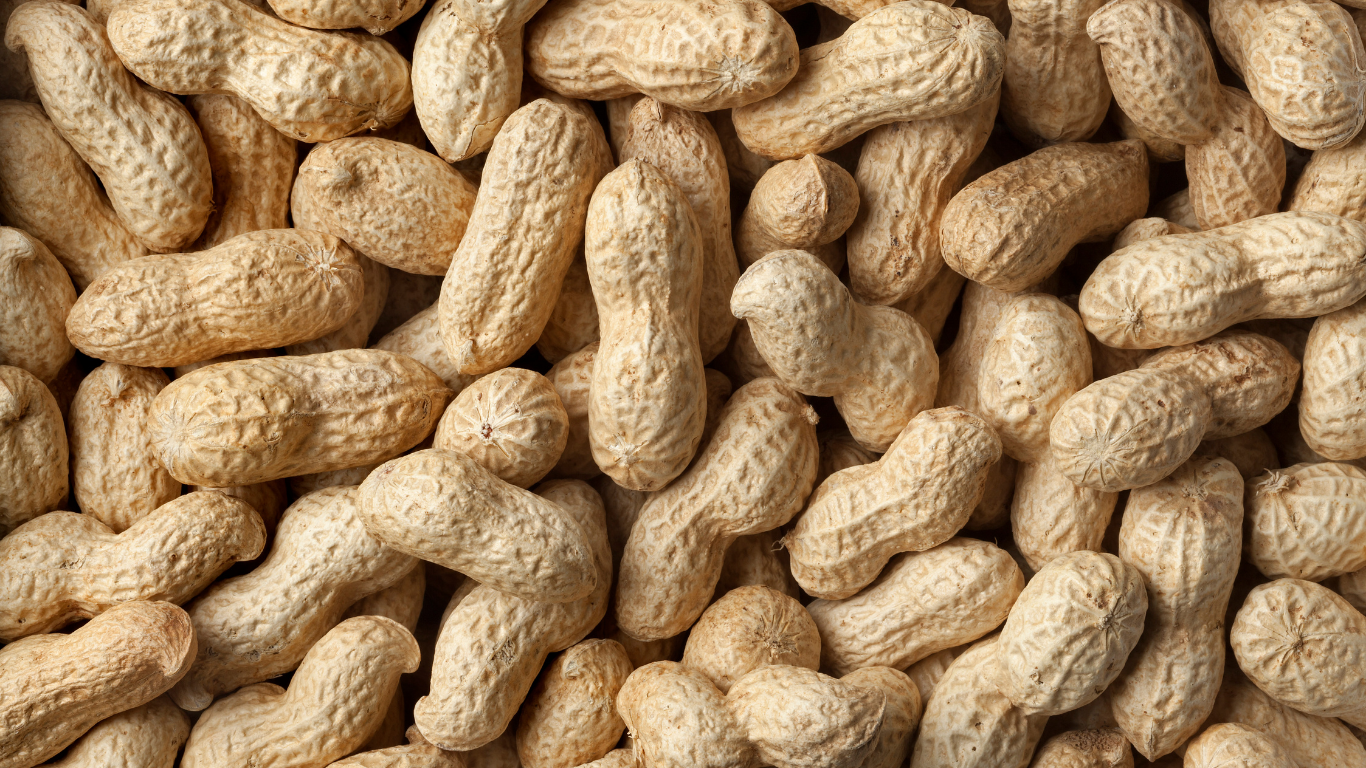The National Peanut Board recently reported that per capita peanut consumption in the U.S. reached an all-time high of 7.9 pounds in 2021 (National Peanut Board, 2021). This is an increase from a record 7.6 pounds per capita in 2020. Peanut consumption has increased domestically since the beginning of the pandemic led by peanut butter use. The industry faced challenges of restocking grocery shelves after shoppers emptied them of peanut butter. The JM Smucker Company reported 7.1% growth in peanut butter consumption in 2020 (JM Smucker Co., 2021). The growth was due to increased consumers working and schooling at home and an increased demand from food banks. Peanut butter usage on a shelled raw basis was up 2.7% from August 2020 to July 2021 according to the USDA National Agricultural Statistics Service (2021). This was above the six-year average of 1.93%. Peanut butter makes up 58.9% of total shelled usage followed by snacks at 20.6%, candy at 17.6% and other uses at 2.95%.
Figure 1. Shelled Peanut Use (Raw Basis) of Primary Peanut Products, 2015-2020 Marketing Years.

The trends for shelled peanuts used domestically in primary peanut products is shown in Figure 1. Peanut butter has increased at a rate of 1.9% over the last six years and averaged 2.6% since 2017. Candy usage has grown at a rate of 2.5% over the last six years and averaged 3.5% since 2017. Snack usage has remained flat over the same time period. What about the 2021 crop marketing year beginning August 1, 2021? The latest data shows usage for the first three months of the marketing year to be below last year by 2.9%. Peanut butter usage is down 4.3%, candy up 2.7% and snacks down 5.7%. The data suggest there might be a softening of shelled peanut usage. The first three months of the marketing year represent old crop peanuts and a larger 2021 crop should start having an impact as we enter 2022. Consumers have returned to the workplace and children are back in school. Time will tell if shelled peanut domestic use has softened or if logistic challenges are impacting reporting.
Citations:
JM Smucker Co., (2021) “Peanut Butter and Jelly: The Ultimate Pandemic Comfort Foods” Press Release. December 17, 2020. https://www.jmsmucker.com/news-stories/stories/22876.
National Peanut Board, (2021) “Peanut Per Capita Consumption Breaks New Record for Second Year in a Row” Press Release. October 21, 2021,https://www.nationalpeanutboard.org/news/peanut-per-capita-consumption-breaks-new-record-for-second-year-in-row.htm.
USDA National Agricultural Statistics Service, (2021) “Peanut Stocks and Processing” ISSN: 1949-1875, August 27, 2021, https://downloads.usda.library.cornell.edu/usda-esmis/files/02870v87z/41688g448/9593vt44b/pnst0821.pdf.
Smith, Nathan. “Is Shelled Use of Primary Peanut Products Softening?“. Southern Ag Today 2(2.1). January 3, 2022. Permalink








